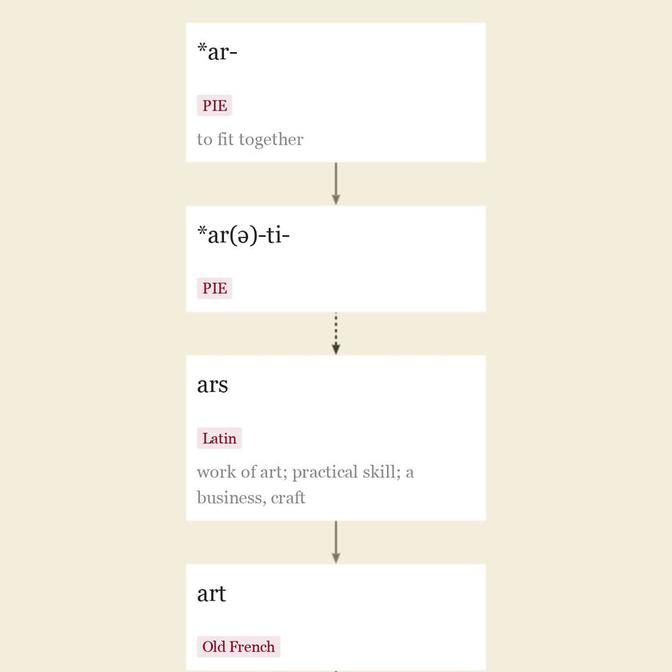art-form n.
"
Entries linking to art-form

early 13c., "
In Middle English usually with a sense of "
In science you must not talk before you know. In art you must not talk before you do. In literature you must not talk before you think. [Ruskin, "The Eagle's Nest," 1872]
Supreme art is a traditional statement of certain heroic and religious truths, passed on from age to age, modified by individual genius, but never abandoned. The revolt of individualism came because the tradition had become degraded, or rather because a spurious copy had been accepted in its stead. [William Butler Yeats, journal, 1909]
Expression art for art's sake (1824) translates French l'art pour l'art. First record of art critic is from 1847. Arts and crafts "
c. 1200, forme, fourme, "
From c. 1300 as "
updated on September 25, 2022